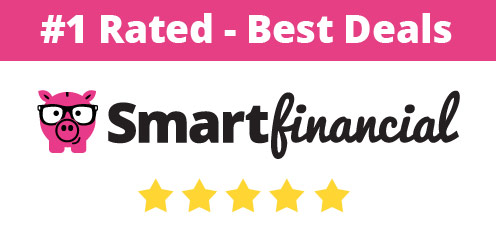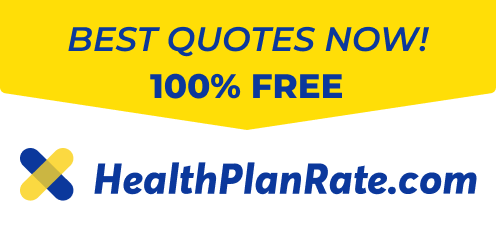Many people can get health insurance in one of two ways. One avenue is through an employer. Another option is individual health insurance — either through the Affordable Care Act (ACA) marketplace or directly through a health insurer.
Each option has its pros and cons. It’s important to compare your options and determine what you want and what you can afford.
Here are the differences between employer and individual plans and what you need to know about each.
What is employer-sponsored health insurance?
Most Americans — approximately 49% of the nation’s total population — receive group health insurance through their employer, according to Kaiser Family Foundation.
Businesses of all sizes offer employer-sponsored health insurance to their employees. A recent Insure survey found that most employees say their company’s health plan is key to employee recruitment and retention.
“This coverage is typically provided to employees who are considered full-time workers, which often equates to 30 hours per week or 130 hours per month on average, based on government regulations and insurance carrier rules,” says Denise Stefan, president of Engage Insurance.
Marshall Darr, vice president of marketing for Decent, says employers with 50 or more employees must offer health insurance coverage.
“These businesses will face a penalty if they don’t offer health insurance to their employees, so almost all do,” he says. “Many companies with fewer than 50 employees also provide coverage, if for no other reason than it’s the most cost-effective way for the owners themselves to get coverage, too.”
Employers required to provide health insurance are also often obligated to cover at least 50% of their employee premiums.
“Consequently, it’s usually much cheaper to the employee to sign up for employer-based health insurance than non-employer-sponsored health insurance,” Darr notes. “Also, employer-sponsored health insurance is heavily tax-advantaged. Employees pay with pre-tax payroll contributions and the employers often receive large tax write-offs for offering the plans.”
Jacquelynn Neat, a benefits specialist with Employee Benefit Professionals, says “the tax savings, along with the employer contribution, significantly reduce the premiums for these employees.”
What is individual health insurance?
Individual health insurance isn’t connected to an employer. These insurance plans are commonly offered through two different channels:
- The ACA marketplace
- Directly from an insurer
Kaiser Family Foundation reports that only around 6% of Americans find health insurance on their own through non-group coverage.
“For those who are self-employed, unemployed, work for an employer who is not required to offer health insurance or work for an employer whose rates are outside of the employee’s budget, individual health insurance plans have historically offered a solution,” says Neat.
Marketplace plans are offered at Healthcare.gov. You’re able to compare plans in your area and get estimated health insurance costs for each plan. By entering your income information, you’re also able to get cost quotes based on possible subsidies that reduce the cost of ACA health plans.
Thanks to the Affordable Care Act (ACA), these plans:
- Must cover 10 essential health benefits
- Can’t charge unhealthy members exorbitantly more than other members based on health status
- Can’t have a cap on their annual coverage
- Can’t exclude you for pre-existing medical conditions
“Anyone who lives in the United States, is a US citizen or legal resident and is not incarcerated is eligible to apply for the federal subsidy,” Stefan says.
Open enrollment for individual health insurance is Nov. 1 to Dec. 15 in most states. A handful of states have longer open enrollment periods. If you don’t enroll in a plan during open enrollment, you can only get an individual plan if you qualify for a special enrollment period.
If my employer offers health insurance, do I have to take it?
You aren’t required to accept an employer’s health insurance plan.
Many workers often waive this coverage. Reasons why you might deny an employer’s plan include:
- You can’t afford the coverage.
- You go on a spouse’s plan instead.
- You’re eligible for medicare.
- You have military-sponsored coverage.
“However, if you waive your employer-sponsored plan, and it is deemed affordable and meets the requirements under ACA regulations, you may not be eligible for a subsidy on the ACA marketplace if you choose instead to pursue a plan at Healthcare.gov,” says Stefan.
Before deciding to waive health insurance offered by your employer, “it is important to discuss your eligibility for an individual marketplace plan with an experienced health insurance specialist,” suggests Neat.
What percentage of health insurance do employers pay?
Kaiser Family Foundation estimates that employers pick up 83% of health insurance premiums for single coverage on average and 73% of family coverage premiums. Employees pay the rest of premium costs.
Depending on the company and the plan, an employer’s minimum contribution must often pay toward an employee’s policy is 50% and 0% for dependents.
What is the average cost of employer-sponsored health insurance?
Annual premiums in 2020 for employer-sponsored plans averaged $21,342 for family coverage and $7,470 for individual coverage. Employees contribute $5,588 and $1,243, respectively, according to Kaiser Family Foundation.
“Costs can vary a lot, depending on where your employer and its employees are located, what your age is and other factors,” says Darr. “Typically, the price is calculated by averaging out the cost to insure all the individuals joining the policy and making what’s called a ‘composite rate.'”
Employer-sponsored health insurance vs. individual health insurance
Experts often suggest employer-sponsored group health insurance over an individual plan.
“Employer-sponsored health insurance will save you a ton of money. But you will have fewer options in terms of the plans to choose from and your coverage will be contingent on you remaining employed with the company,” notes Darr.
Individual health insurance options, on the other hand, provide many plan choices. The problem with individual plans is that they’re usually more expensive since no employer is helping pay monthly premiums, Darr says.
If you’re self-employed, unemployed or work for a small business, you may not have a choice: You’ll likely need to shop for and acquire an individual health insurance plan.
“With an individual insurance policy, note that you must research and budget for plan changes each year upon renewal. This often means that your existing plan will be discontinued and you must go back to the drawing board, researching new plans and possibly new networks,” Neat says.
Prepare to scrutinize many different plan types to select from — including preferred provider organization (PPO), health maintenance organization (HMO), exclusive provider organization (EPO) and point of service (POS) plans.
“Some allow you to use any doctor and health facility but may provide different coverages for each and some limit your choices or charge you more if you use doctors outside of their plan,” Stefan says. “Before choosing a plan, get a list of your doctors as well as any medications you are taking to ensure that these are covered by the carrier.”
One lower-cost option is high-deductible health insurance. These plans have lower premiums than other comprehensive plans, but they have higher out-of-pocket costs. One advantage of high-deductible plans is that you can save money for your health care tax-free in a health savings account. Find out more about health savings accounts.
Last, expect to pay more each year whether you have an individual or employer-sponsored plan. Health insurance premiums — and deductibles — increase annually.
“Employer-sponsored plans renew each year, requiring business owners to budget for increases while determining if they can maintain the same contribution as the prior year or if the employees will need to take on additional premium payments,” explains Neat.











